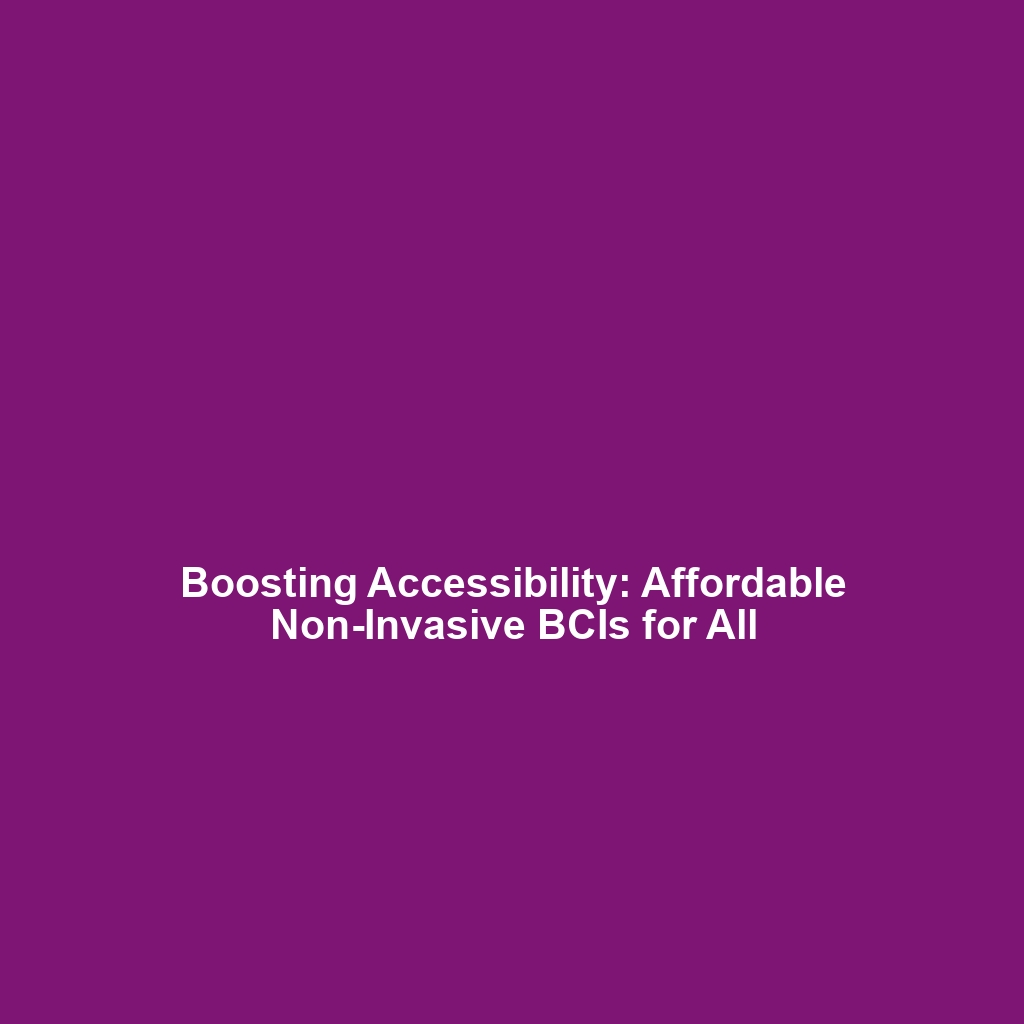Accessibility in Brain-Computer Interfaces: Reducing Costs and Improving Usability
As Brain-Computer Interfaces (BCIs) advance, the need for greater accessibility for the general public becomes imperative. To facilitate broader adoption of this transformative technology, efforts must focus on reducing the cost of non-invasive BCIs and enhancing their ease of use. This article delves into the significance of these efforts within the realm of BCIs, highlighting how making this technology more affordable and user-friendly could revolutionize the way people interact with the digital world.
Key Concepts of Accessibility in BCIs
Understanding accessibility in BCIs involves unraveling key concepts that illustrate how these interfaces operate and their potential societal impact. The following principles are crucial:
- Non-invasive Technology: Non-invasive BCIs measure brain activity without the need for surgical procedures, making them safer and more appealing for public use.
- Cost-Effectiveness: High costs currently limit access; reducing these expenses could enable a wider range of applications and increase user adoption.
- User Experience: Simplifying the interaction process ensures that even those with little technical knowledge can engage with BCI technology effectively.
Applications and Real-World Uses
Efforts to enhance accessibility for the general public pave the way for numerous significant applications of BCIs:
- Assistive Technologies: Non-invasive BCIs can help individuals with physical disabilities control devices, improving their quality of life.
- Gaming and Entertainment: Enhanced user interfaces allow users to interact with games using brain signals, providing immersive experiences.
- Healthcare Monitoring: BCIs can facilitate continuous monitoring of neurological conditions, offering insights into patient health.
Current Challenges in BCIs
While the potential for BCIs is vast, several challenges remain in making them more accessible:
- Technical Limitations: Current technology may struggle with accuracy and reliability in diverse environments.
- Market Costs: Research and development costs can prohibitively inflate prices for end-users.
- Training and Education: Users may require substantial training to effectively operate BCI systems, which can hinder adoption.
Future Research and Innovations
The future of BCIs, particularly concerning accessibility, looks promising with ongoing research focused on:
- Affordable Devices: Innovations aimed at creating cost-effective BCI devices that do not compromise functionality.
- AI Integration: Enhanced algorithms may streamline signal processing, increasing the usability of non-invasive BCIs.
- Wearable Technology: Development of wearable BCIs that blend seamlessly with daily life is on the horizon.
Conclusion
In summary, improving accessibility for the general public through efforts to reduce the costs of non-invasive BCIs and improve their ease of use is essential for the broader acceptance of this groundbreaking technology. By addressing current challenges and harnessing innovative research, we can ensure that more individuals benefit from the capabilities of BCIs. To learn more about BCIs and their impact on society, check our articles on BCI Applications and Future Technologies.
